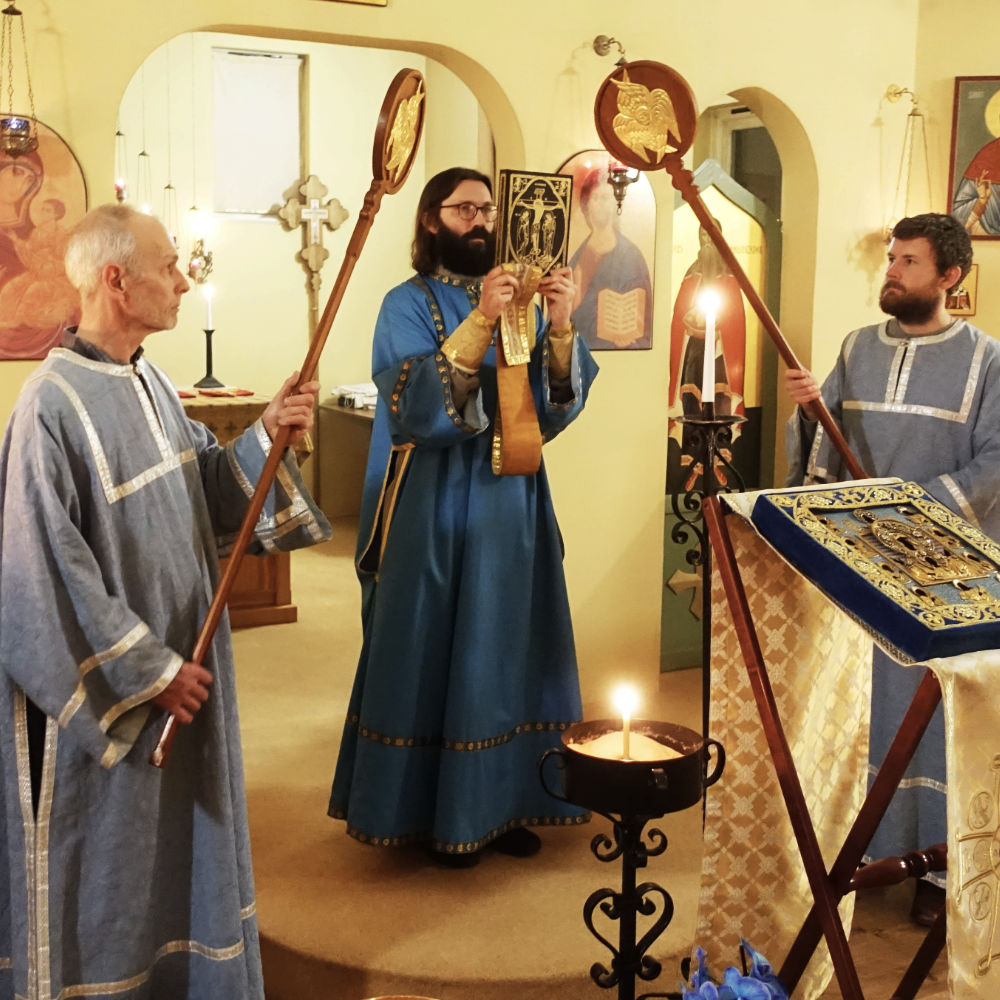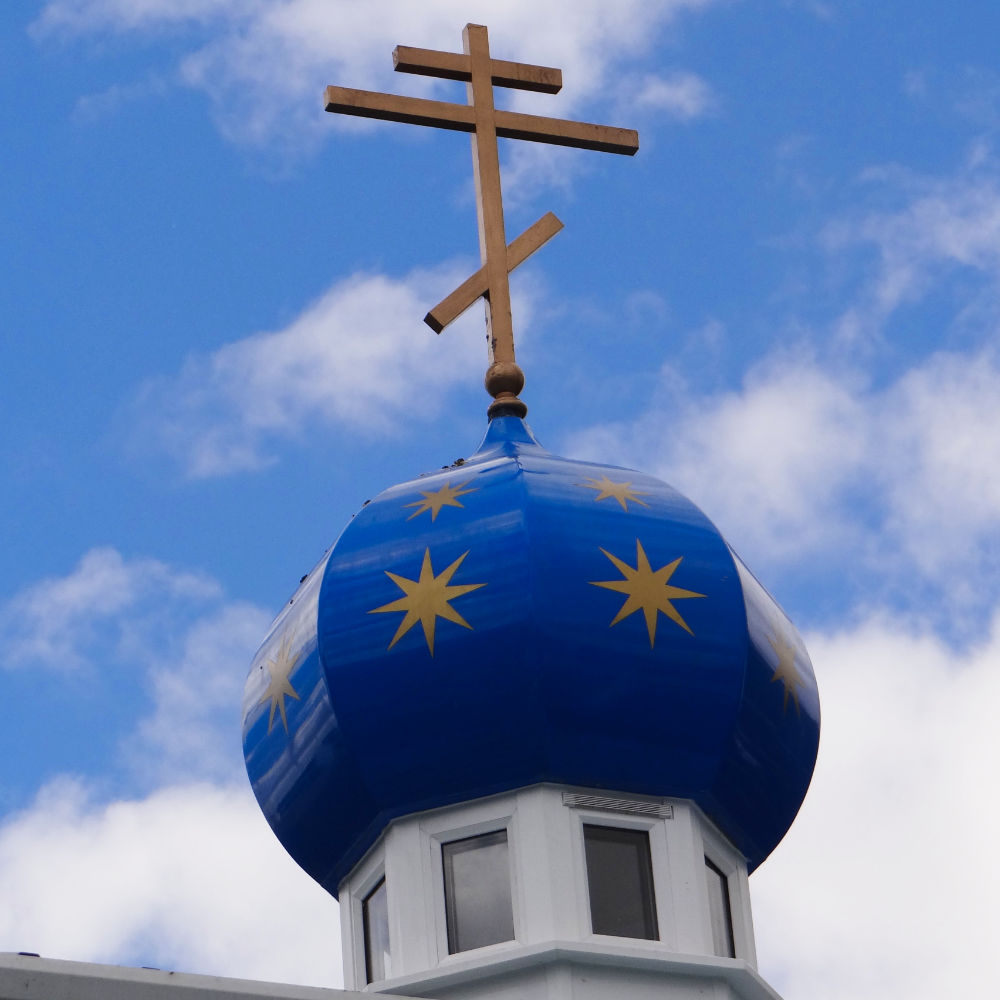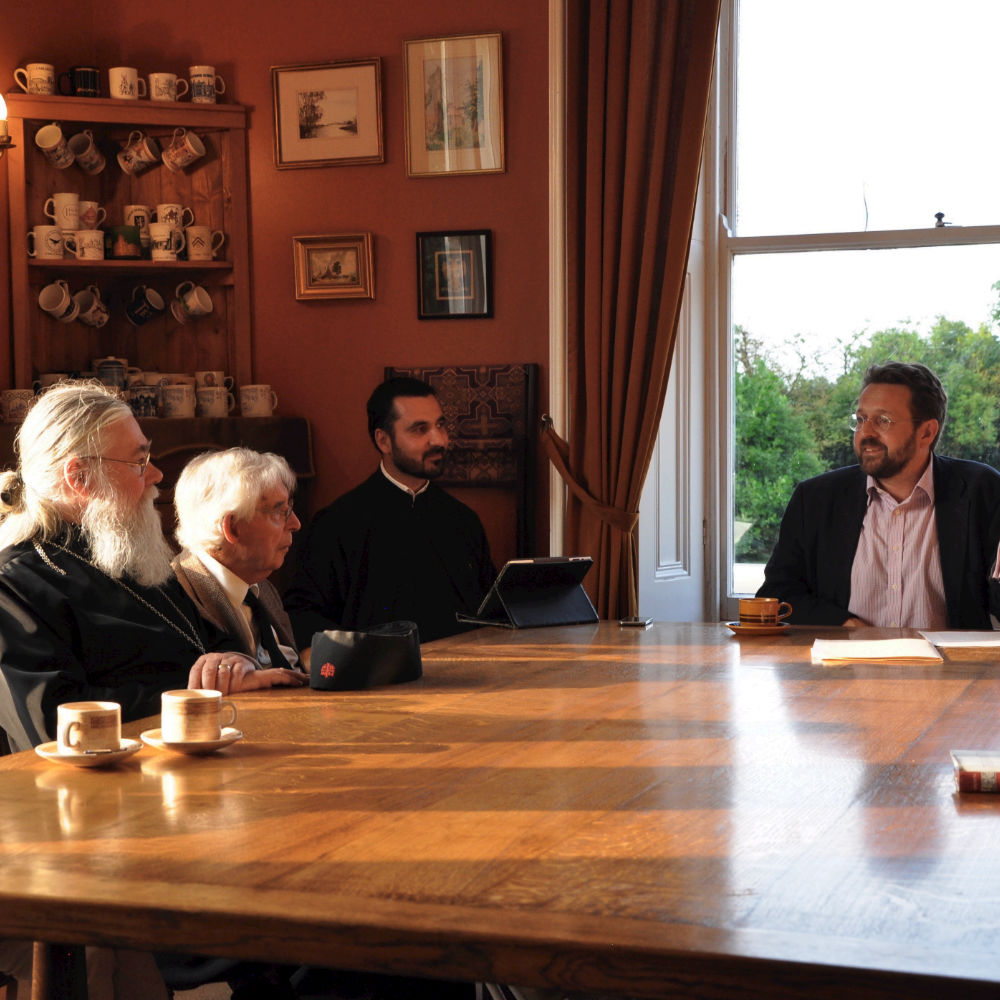About Orthodox Christianity
What Orthodox Christians Believe
I believe in one God, the Father Almighty, Maker of heaven and earth, and of all things visible and invisible:
And in one Lord Jesus Christ, the Son of God, the Only-begotten, Begotten of the Father before all ages, Light of Light, True God of True God, Begotten, not made; of one essence with the Father, by whom all things were made:
Who for us men and for our salvation came down from the heavens, and was incarnate of the Holy Spirit and the Virgin Mary, and became man;
And was crucified for us under Pontius Pilate, and suffered and was buried;
And rose again on the third day, according to the Scriptures;
And ascended into the heavens, and sitteth at the right hand of the Father;
And shall come again, with glory, to judge both the living and the dead, Whose kingdom shall have no end.
And in the Holy Spirit, the Lord, the Giver of Life, Who proceedeth from the Father, Who with the Father and the Son together is worshiped and glorified, Who spake by the Prophets;
In One Holy Catholic and Apostolic Church.
I Confess one Baptism for the remission of sins.
I look for the Resurrection of the dead,
And the life of the age to come, Amen.

What is the Orthodox Church?
The Orthodox Christian Church is a worldwide body of believers who confess and worship Jesus Christ as the Son of God, as Lord and Messiah.
This body has a tangible and continuous history of Christian faith and practice from the time of Christ’s Apostles. The use of the adjective “orthodox” to describe the Church dates back to the earliest centuries and was applied to those Christians who maintained the Tradition transmitted by Christ’s Apostles (1 Thess. 2:15).
The word “orthodox” does not mean strictness or rigidity. A literal translation is “proper glory” and is concerned with giving glory to God – both in formal worship and in way of life – in a way that is faithful to His self-revelation, His majesty and Being. The Orthodox Church is therefore not a “denomination” and predates both denominationalism and non-denominationalism. She has been labelled as “Eastern” by historians to distinguish her from what eventually became separate church bodies in the western hemisphere. However, the Orthodox Church is not reserved for certain ethnicities (e.g. Greek, Russian) but is for all people.
The Orthodox Church is currently the second largest body of Christians in the world with 225 million adherents across the globe. Whatever their national or regional origins all Orthodox Churches share the same Faith and are united to one another in “one Lord, one Faith, one baptism.” (Eph. 4:5). The Head of the Orthodox Church is Jesus Christ and her only infallible Guide is the Holy Spirit. There is no earthly head of the Orthodox Church. All bishops are equal, sharing the same ministerial grace and forming a brotherhood to whom each is accountable. It is not an earthly leader that holds the Church together but adherence to the Orthodox Faith – in the words of St. Vincent of Lerins (4th-5th c.), that which “has been believed everywhere, at all times, and by all.”
Since “Jesus Christ is the same yesterday today and forever” (Heb. 13:8), the Church has no need to conform to the newest fads, philosophies, and doctrines. She does however adapt to new circumstances, adopts the language of the indigenous people, and embraces everything godly and good in the culture she finds herself.
The Orthodox Church teaches that God alone has redeemed mankind through the Cross. Salvation is the process of accepting and incorporating that act of redemption personally. Salvation is therefore a process of transformation (Rom. 5:12). It is not merely a matter of being declared “not guilty” by legal decree – it is an organic restoration to union with God, a process of “being saved” (1 Cor. 1:18; 2 Cor. 2:15) by God’s grace. The Greek word for salvation designates “healing.” The Orthodox understanding of life in Christ views sin and salvation in terms of illness and healing of the soul. The whole life of the Orthodox Church is given as a means to this restoration of spiritual health, i.e. to bring the human person into an authentic union with God, to become Christ-like, and to be more and more open to the Spirit of God. The life of the Church is nothing other than this life of salvation and grace, accessible to all who would avail themselves of it.
“We knew not whether we were in heaven or on earth, for surely there is no such splendour or beauty anywhere upon earth. We cannot describe it to you: only this we know, that God dwells there among men….”
The words above were written in the 10th century after a first experience of the majestic worship of God in the Orthodox Church in Constantinople. They express a great truth which has always been at the heart of the Orthodox understanding – that Christianity is first and foremost an encounter with the living and personal God. It is through prayer and worship that God is not merely known about, but known and experienced. And through Jesus Christ, the Church – Christ’s Body – has become this place of encounter with God, heaven on earth (Eph. 1:10). To experience the beauty, glory, and holy splendour of this same Orthodox Church in the 21st Century, we invite you, as Philip said to Nathaniel (Jn. 1:46), to “come and see!”

Frequently Asked Questions
Q: Can Non-Orthodox come to the services?
A: Yes- everyone is welcome, whatever their beliefs or nationality.
Q: Are the services in English?
A: Yes- the services are almost solely in English, with the odd spattering of Slavonic, Greek or Romanian.
Q: Why so many ikons? And why are people kissing them?
A: The practice of painting and venerating holy images is an ancient one. In every Orthodox Church you will find ikons of Our Lord, His Most Holy Mother and holy people from all ages. Ikons are not portraits but depict spiritual reality. In kissing them, we show our love for those who are depicted. We venerate ikons while worship is reserved for God alone.
Q: Do all female visitors have to wear headscarves?
A: Although Orthodox women freely choose to cover their heads in obedience to Scripture (1 Cor 11:2-16) it is not compulsory for non-Orthodox female visitors to wear headscarves in order to participate in worship.
Q: Why are most people standing?
A: The normal position in the Orthodox Church is standing reverently because this is the most appropriate position to assume when in the presence of God. (Rev 7:9) Seating is available however, for the elderly and infirm.
Q: Why have the clergy got their backs to me during the services?
A: The clergy are not turned away from the congregation but – together with the people – face East and the “True Light”.
Q: Why is there so much singing?
A: Singing is a more beautiful form of human expression than mere speech, and therefore more appropriate for worship, as we always give the best that we can to God.
Q: Can I join in?
A: Yes. Although certain variable parts of the service are sung exclusively by the choir, many parts of the service should be sung by the whole congregation these include the “Lord have mercy” after each petition of the litanies, “Amen” at the end of each prayer, “and with thy spirit” after the priest blesses as well as the Creed and the Lord’s Prayer. If you would be interested in trying to sing more in the church services please approach the choir master Reader Mark.
Q: Where is the confession box?
A: Confession doesn’t take place in a box in the Orthodox Church. It is confidential but not hidden or anonymous.
Q: What are the “Hours” read before the Liturgy?
A: The Hours are the monastic prayers (offices) which are said at different times of the day, consisting mainly of psalms. We in parishes participate in them in so far as we are able, with the third and sixth hours before the Divine Liturgy on Sundays.
Q: What are the little breads and name slips that are taken up to the altar in the service?
A: Orthodox people write the names of the living and departed on the slips and hand them to a member of the clergy along with a small bread called a prosphora. In the altar the priest reads out each of the names of the living and departed and takes a particle out of the prosphora in remembrance of the departed souls. These particles are then consecrated along with the other Holy Gifts at the Liturgy.
Q: Why is incense used so much?
A: Incense represents prayers rising to God (Psalm 140). It is also appropriate that God’s house is beautiful in every way, including in its fragrance.
Q: What is the Orthodox belief about the Eucharist?
A: Orthodox hold that Christ’s Body and Blood are truly present in the Eucharist and that, through them, God nourishes us spiritually. (John 6:56).
Q: Can anyone receive Holy Communion?
A: Only baptised Orthodox Christians who have properly prepared through confession, the preparatory prayer and fasting from midnight may receive Holy Communion with the blessing of the priest.
Q: Why is this administered on a spoon?
Communion has been administered on a spoon since ancient times because this is the safest way of ensuring that it is easily consumed. Bread and hot wine are also taken immediately after communion to ensure that the Holy Gifts have been fully swallowed.
Q: Why and how do babies and children receive Communion?
A: Babies and children receive Communion because through baptism and chrismation (annointing with oil) they are full and equal members of the Body of Christ. Indeed, it is traditional for the youngest members of the congregation to receive first amongst people because they are purer and therefore more worthy.
Q: Can I kiss the cross at the end of the service?
A: Yes- if you feel moved to kiss the cross out of love and veneration then you are very welcome to do so and to take some blessed bread (antidoron) whether you are Orthodox or not.
Q: What are the prayers read at the end of the service?
A: Thanksgiving prayers for Communion are read after the service. If you have received Communion you should stay while they are read.
Q: Is there someone I can talk to if I have any questions?
A: You can talk to any member of the clergy, easily identified by the fact that they will be wearing a cassock.
